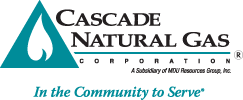| NGSS Physical Sciences | 4 | Energy | 4-PS3-4 | Energy in Chemical Processes and Everyday Life | The expression “produce energy” typically refers to the conversion of stored energy into a desired form for practical use. |
| NGSS Physical Sciences | 4 | Energy | 4-ESS3-1 | | Obtain and combine information to describe that energy and fuels are derived from natural resources and their uses affect the environment. |
| NGSS Physical Sciences | 4 | Energy | ESS3.A | Natural Resources | Energy and fuels that humans use are derived from natural sources, and their use affects the environment in multiple ways. Some resources are renewable over time, and others are not. |
| NGSS Physical Sciences | 5 | Structure and Properties of Matter | 5-PS1-1 | | Develop a model to describe that matter is made of particles too small to be seen. |
| NGSS Physical Sciences | 5 | Structure and Properties of Matter | 5-PS1-A | | Matter of any type can be subdivided into particles that are too small to see, but even then the matter still exists and can be detected by other means. A model showing that gases are made from matter particles that are too small to see and are moving freely around in space can explain many observations, including the inflation and shape of a balloon; the effects of air on larger particles or objects. |
| CCSS ELA Literacy | 3 | Reading Informational Text | CCSS.ELA-LITERACY.RI.3.7 | Integration of Knowledge and Ideas | Use information gained from illustrations (e.g., maps, photographs) and the words in a text to demonstrate understanding of the text (e.g., where, when, why, and how key events occur). |
| CCSS ELA Literacy | 5 | Reading Informational Text | CCSS.ELA-LITERACY.RI.5.7 | Integration of Knowledge and Ideas | Draw on information from multiple print or digital sources, demonstrating the ability to locate an answer to a question quickly or to solve a problem efficiently. |
| Health Education | 3 | Injury Prevention | H1.Sa1.3a | | Identify ways to prevent injuries at home, at school, and in the community. |
| Health Education | 3 | Injury Prevention | H1.Sa1.3b | | Create emergency, fire, and safety plans for home. |
| Health Education | 4 | Injury Prevention | H7.Sa1.4 | | Describe practices and behaviors that promote safety and reduce or prevent injuries. |
| Health Education | 5 | Injury Prevention | H1.Sa1.5a | | Identify dangerous or risky behaviors that might lead to injuries. |

